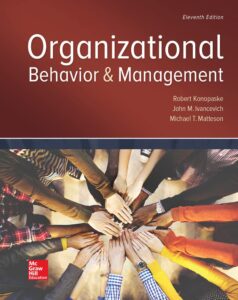Introduction
Human Resource Management (HRM) is a vital function of any organization as it deals with the management of an organization’s most important asset – its employees. It is a concept that has evolved over the years to become a fundamental part of organizational success. In today’s fast-paced and dynamic business environment, traditional HRM practices have become obsolete, and a contemporary approach is essential to adapt and thrive.
One of the most influential books on HRM is Human Resource Management: A Contemporary Approach by Ian Beardwell, Len Holden, and Tim Claydon. The book is widely regarded as a seminal text on the subject and has been a key resource for HR professionals, managers, and students alike. The authors bring a wealth of knowledge, experience, and research to the table, making it a comprehensive and informative guide to HRM.
Authors
Ian Beardwell is a prominent HRM academic and writer. He has written numerous books, articles, and papers on HRM and has been a visiting professor at various universities worldwide. Len Holden is also an accomplished HRM expert and has held senior management positions in the field. Tim Claydon is a Professor of Human Resource and Change Management at Hertfordshire Business School and has authored several books and articles on HRM, leadership, and organizational development.
Book Overview
Human Resource Management: A Contemporary Approach is a comprehensive guide to the principles and practices of HRM. The book is divided into four parts, covering the fundamentals of HRM, strategic HRM, managing HRM, and HRM in context. Each part delves into the key areas of HRM, providing a blend of theory, research, and real-world examples.
The book begins by introducing the concept of HRM, its evolution, and its relevance in today’s business environment. It then moves on to explore the different functions of HRM, such as recruitment, training and development, performance management, and employee relations. The authors also examine the role of HRM in strategic decision-making, emphasizing the need for alignment between HR and organizational goals.
The third part of the book focuses on managing HR, exploring various areas such as diversity and inclusion, talent management, and employee engagement. It also delves into emerging practices in HRM, such as the use of technology and data analytics. The final part looks at HRM in context, considering the influence of factors such as globalization, ethics, and legal aspects on HRM practices.
Key Themes
One of the key themes of Human Resource Management: A Contemporary Approach is the importance of taking a strategic and holistic approach to HRM. The authors stress the need for HRM to be integrated with an organization’s overall strategy and for HR professionals to possess a broad understanding of business operations. The book also highlights the growing trend of using data analysis in HR decision-making, emphasizing the need for HR professionals to develop analytical skills.
The authors also stress the growing importance of employee well-being and work-life balance in contemporary HRM. The book acknowledges the changing nature of work and encourages organizations to adopt employee-centric policies and processes. Additionally, the book emphasizes the need for HR professionals to be ethical and socially responsible in their practices, considering the impact on stakeholders and society as a whole.
Conclusion
Human Resource Management: A Contemporary Approach is a comprehensive and insightful guide to HRM principles and practices. Its contemporary approach and emphasis on emerging trends make it a relevant resource for HR professionals, managers, and students. The book is a testament to the authors’ expertise and will continue to be a valuable resource for those seeking to understand and excel in the field of HRM.




